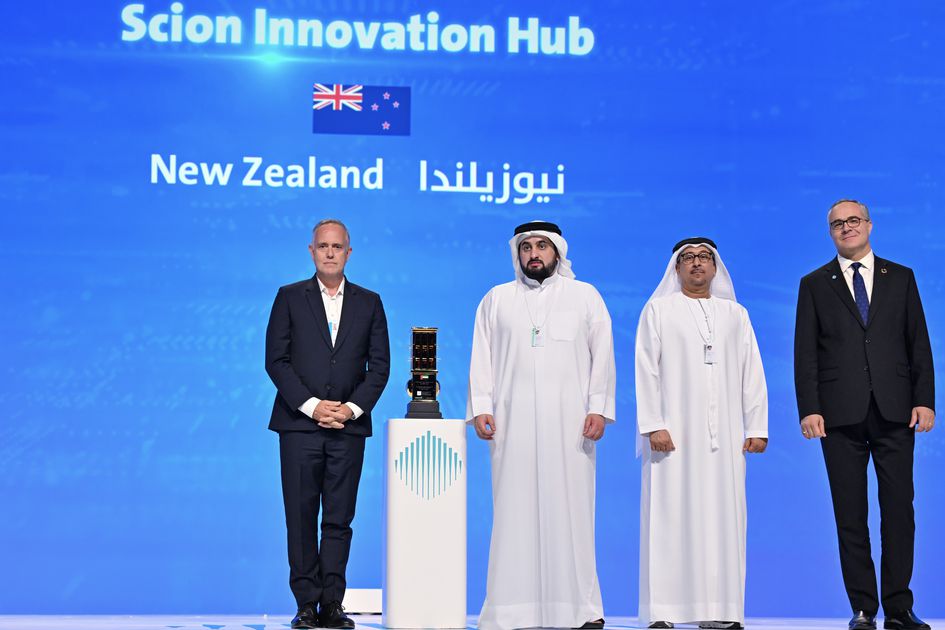The summit is supported by non-profit global players such as the World Health Organisation, Unicef and UN-Habitat among others, and attended by thought leaders from an international spectrum. So, RTA Studio was honoured – and a little overawed - to be invited, as part of the event, to an awards’ ceremony to showcase Scion Innovation Hub to such an esteemed audience...
The Crown Research Institute building in Rotorua, designed in collaboration with Irving Smith Architects, was selected by a grand jury as one of the top two submissions in The Most Beautiful, Innovative and Iconic Building category of the Dubai International Best Practices Award for Sustainable Development. We were up against tough competition in the form of Bjarke Ingels Group (BIG) + Heatherwick Studio and their new Google headquarters in Silicon Valley.
Requirements for the finals necessitated shooting a quick-turnaround video of Scion Te Whare Nui o Tuteata over the Christmas break and we were fortunate to secure videographer Paul Brandon to capture the unique qualities of this project.
The video (which you can see here) highlights, among other features, the innovative X-shaped diagrid made of laminated veneer timber that forms the structural skeleton of the building as well as the all-timber node which protects it against earthquake damage that was developed especially for the project.
Not only sustainably sound, this embodied carbon-zero building has proved a real asset to the region. The facility, which welcomes domestic and international visitors, is a public-front showcase of New Zealand’s forestry industry and the cutting-edge innovations that will have positive impacts on the carbon-zero goals both in Aotearoa and overseas.
We were naturally delighted when Scion was named as the winner of this prestigious World Governments Summit award. RTA Studio founder Richard Naish who attended the presentation ceremony in Dubai said: “While New Zealand may be out on a limb geographically, this award proves that our thinking can be front and centre of global sustainability goals. The simple message is: the world needs to construct more multi-level timber buildings.”
